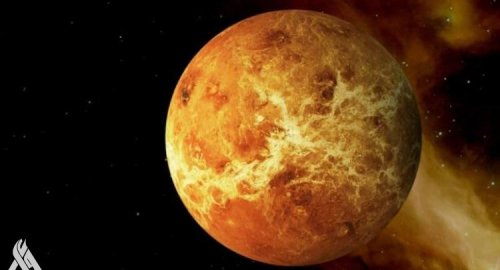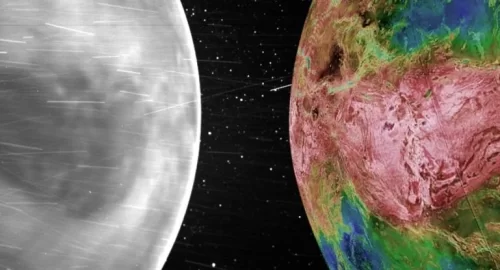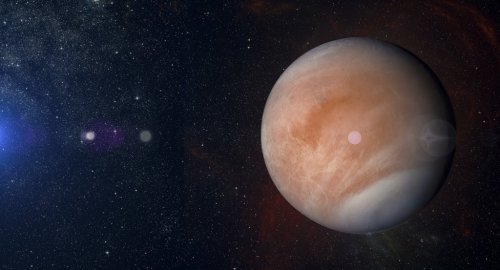
VENUS RELEASES OXYGEN AND CARBON INTO SPACE

- 18-04-2024, 11:25
INA- sources
Venus, unlike Earth, has no intrinsic magnetic field. As a result, the solar wind interacts directly with its atmosphere, accelerating charged particles that can escape into space. In situ measurements by space probes had already shown that these ions were mainly composed of oxygen and hydrogen. However, the mass resolution of the instruments used made it impossible to distinguish between carbon, nitrogen and oxygen.
In August 2021, the BepiColombo probe, on its way to Mercury, flew over Venus for the second and last time. On this occasion, the probe passed just under 550 km from the planet’s surface. A large number of onboard instruments were active during the flyby, gathering unique data on Venus’ environment. Among them, the MSA (Mass Spectrum Analyzer) ion mass spectrometer designed by CNRS Terre & Univers scientists – in collaboration with ISAS-JAXA, MPS Solar Sytem Research, and IDA, detected a stream of low-energy carbon and oxygen ions from Venus’ induced magnetosphere. These ions were located about 6 radii from the planet.
This discovery is important since it provides information on the composition and dynamics of Venus’ magnetosphere. Carbon and oxygen ions are probably expelled from Venus’ atmosphere by an ambipolar electric field generated by electrons escaping from the planet.
This process is similar to that which produces the “polar wind” on Earth. MSA’s observations open up new perspectives for the study of Venus’ magnetosphere. They will enable scientists to learn more about the processes that control the evolution of planetary atmospheres, their magnetospheres and their interaction with the solar wind, both in our solar system and in extrasolar systems.
source: IRAP
First joint picture of Greenland Ice Sheet melting, ESA
- Multimedia
- 09:28
US Central Command: We killed ISIS terrorist leader Abu Yusuf in Syria
- International
- 24/12/20
Liverpool compete with Real Madrid to sign Olympique Lyonnais star
- Security
- 24/12/19
ISC, ADX discuss Strengthening Economic Ties
- Economy
- 24/12/16
Iraq assumes presidency of Arab Investment Company’s Executive Board
- Economy
- 24/12/17












